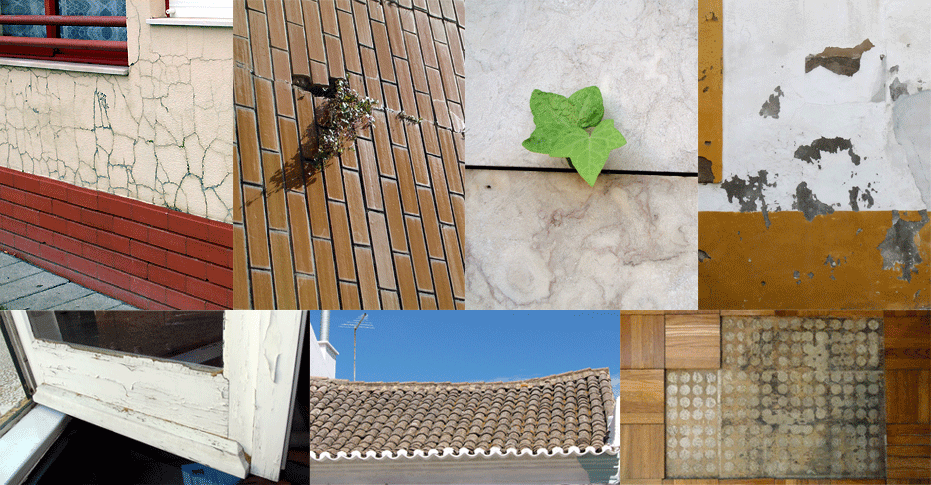Welcome to SLPforBMS
Service Life Prediction for a risk-based Building Management System


The durability of buildings is essential in the quality of life of its users and is a critical component in the social and economic stability of contemporary societies. The interest on service life prediction of buildings and their components arises due to the awareness of society to the need for sustainability, economic factors and the onset of durability problems. Service life prediction is crucial in the management of a vast and ageing building stock, enabling: i) the adoption of more sustainable solutions, adapting the materials’ durability to the building’s design service life; ii) the optimization of maintenance and rehabilitation actions. Furthermore, it allows evaluating, beyond the initial investment, all costs associated with the use and maintenance phases of the building, which represent 80% of the overall costs.
The use of methodologies supported by service life prediction data is still incipient both at the design/execution and service stages of the buildings. Internationally, there are various normative documents and publications which established values for the estimated service life of various construction elements. However, this information is given as an absolute value, not considering the influence of the buildings characteristics in their degradation. The existing methods address the service life of construction elements in a deterministic way, not considering the uncertainty and variability associated with the degradation agents and their synergy.
This research project developed a building management system of building envelope’s elements (flat and pitched roofs, adhesive ceramic tiling, wall renders, painted façades, natural stone claddings, external thermal insulation composite systems (ETICS) and architectural concrete surfaces), in current buildings, including inspection and diagnosis, service life prediction procedures and support decision-making processes in the maintenance/rehabilitation area. The buildings overall performance is intrinsically related to the performance of their components and, in particular to the external envelope that acts as the “skin” of the building, protecting it from the degradation agents. In the first stage, this project developed an inspection and diagnosis system based on the normalized classification of defects (with different degradation levels), leading to correlation matrices between the defects and their causes. These systems are validated through extensive fieldwork, using visual inspections, evaluating the degradation condition of the building elements. The second stage of the project was based on the definition of different service life prediction models, from simple deterministic formulations (single and multiple linear and nonlinear regressions) through stochastic models (Markov chains and logistic regression) and factorial (with deterministic or stochastic approaches) to computational models based on artificial intelligence (artificial neural networks and fuzzy logic), based on the information collected using the inspection and diagnosis system created in the previous stage.
As a milestone of this project, software based on the information systematized on the first stage of the project was created (computer routines can be built in statistical package, e.g. SAS), which allows providing any stakeholder in the construction sector with the estimated service life of the building envelope’s elements, subjected to a set of specific conditions and for different requirement levels, using the degradation models developed in the second stage of the project. This software can be used as decision support tool for manufacturers and materials prescribers, designers, contractors, developers and insurance companies, as it allows stochastically considering the risk associated with failure of the envelope’s elements.
The main lines of innovation of this project are: i) the models are based on advanced statistical tools, with an estimated service life given by a characteristic value associated with a probabilistic distribution; ii) the models are based on artificial intelligence, capable of generalizing for new case studies; iii) the models are created with information based on a specialized data acquisition system that is constantly fed; iv) the models are adapted to the quality and quantity of available data; v) the output of the models are adjusted to user’s needs (prescribers, designers, contractors, maintenance managers, insurance companies); vi) it is possible to quantify/simulate the influence of design, exposure and use conditions on the life cycle of the building envelope’s elements.
The members of the research team gratefully aknowledge the funding from Fundação para a Ciência e a Tecnologia (FCT) and the support of the CERIS research centre (at Instituto Superior Técnico, University of Lisbon).